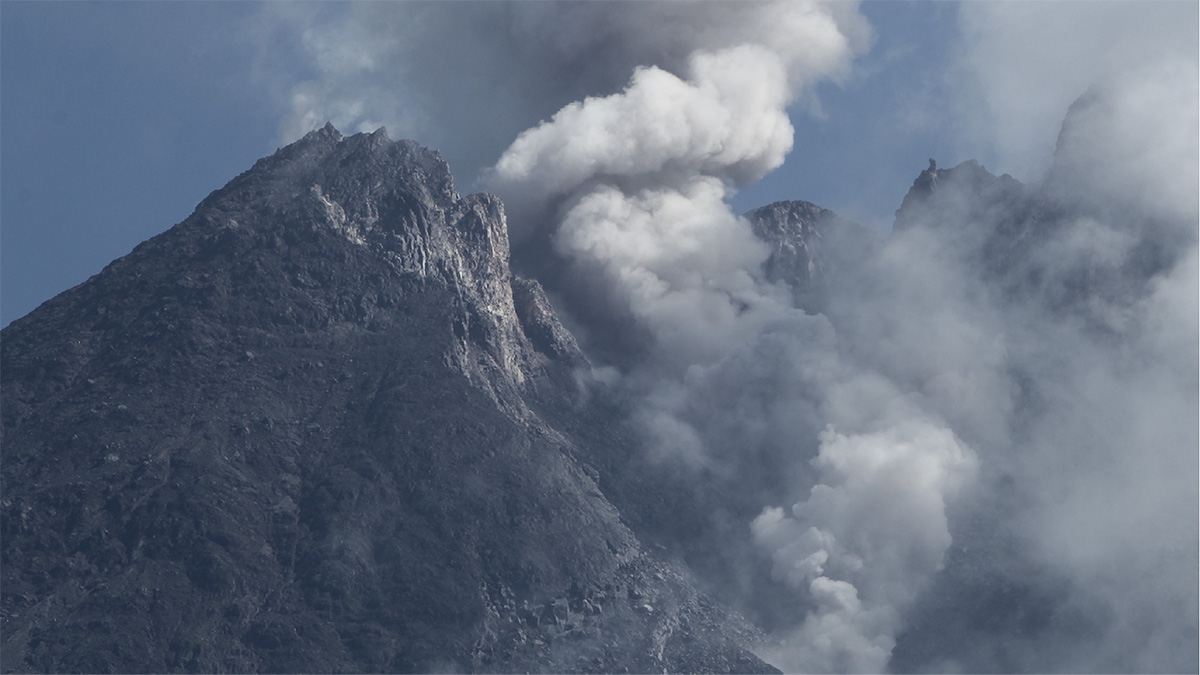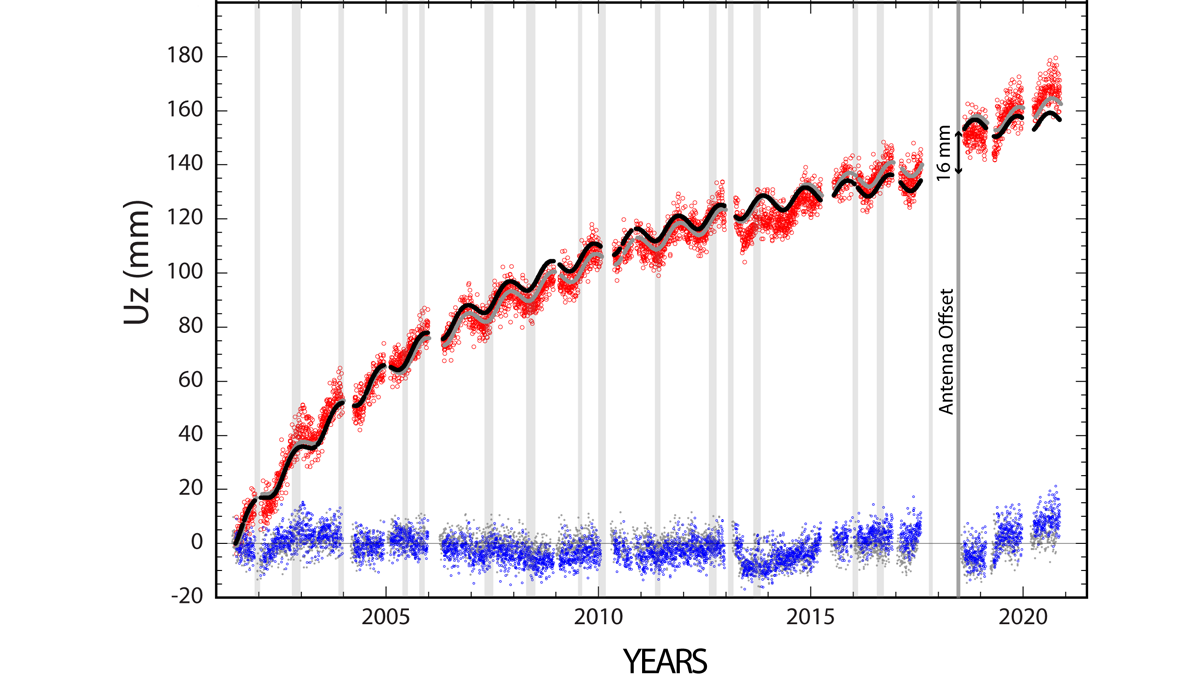Satellite data from Nyiragongo Volcano, Democratic Republic of Congo, track changes in summit-crater lava levels that provide a window into eruption dynamics and aid in forecasting future activity.
lava & magma
Drones Discover Hidden Weaknesses of Collapsing Volcanoes
Understanding buried, hidden zones of structural weaknesses within Indonesia’s Merapi volcano can help to substantially advance our ability to predict catastrophic dome failures.
Magma Lingers at Different Depths on the Basis of Its Water Content
The discovery, gleaned from observations of volcanoes on four continents, could help constrain models of volcanic eruptions.
The Surprising Greenhouse Gas That Caused Volcanic Summer
Extended periods of volcanism known as flood basalt eruptions lead to volcanic winters, which are often followed by an extended period of warming. But it was more than just carbon dioxide that warmed the globe.
Innovative Model Elucidates Geothermal Energy Resource
Data from deep wells and a Bayesian modeling framework shed new light on one of Iceland’s valuable geothermal reservoirs.
Continuity is the Father of Success
Geodetic measurements indicate that Three Sisters Volcano uplifted by almost 300 millimeters in the past 25 years without significant anomalies at the surface.
Layered Zone Beneath Coral Sea Suggests Ancient Magma Ocean
Scientists studying South Pacific earthquakes suggest that an ultralow-velocity zone at the core-mantle boundary may be a remnant of a molten early Earth.
The Role of Magma in the Birth of the Atlantic Ocean
High-resolution seismic models of the Nova Scotia margin reveal a role for magmatism in continental breakup, even at magma-poor sections of the eastern North American margin.
Tubos de lava terrestres podrían ofrecer información sobre la vida extraterrestre
Una nueva investigación encuentra que Actinobacteria en cuevas de lava fijan carbón y sobreviven independientemente de aportes superficiales, ofreciendo una nueva perspectiva en la investigación de la vida fuera de la Tierra.
Identifying an Eruption “Tipping Point” in Hot Spot Volcanoes
By analyzing lava samples, researchers show how chemical processes that occur during magma’s ascent to the surface may contribute to a volcano’s eruptible state.










